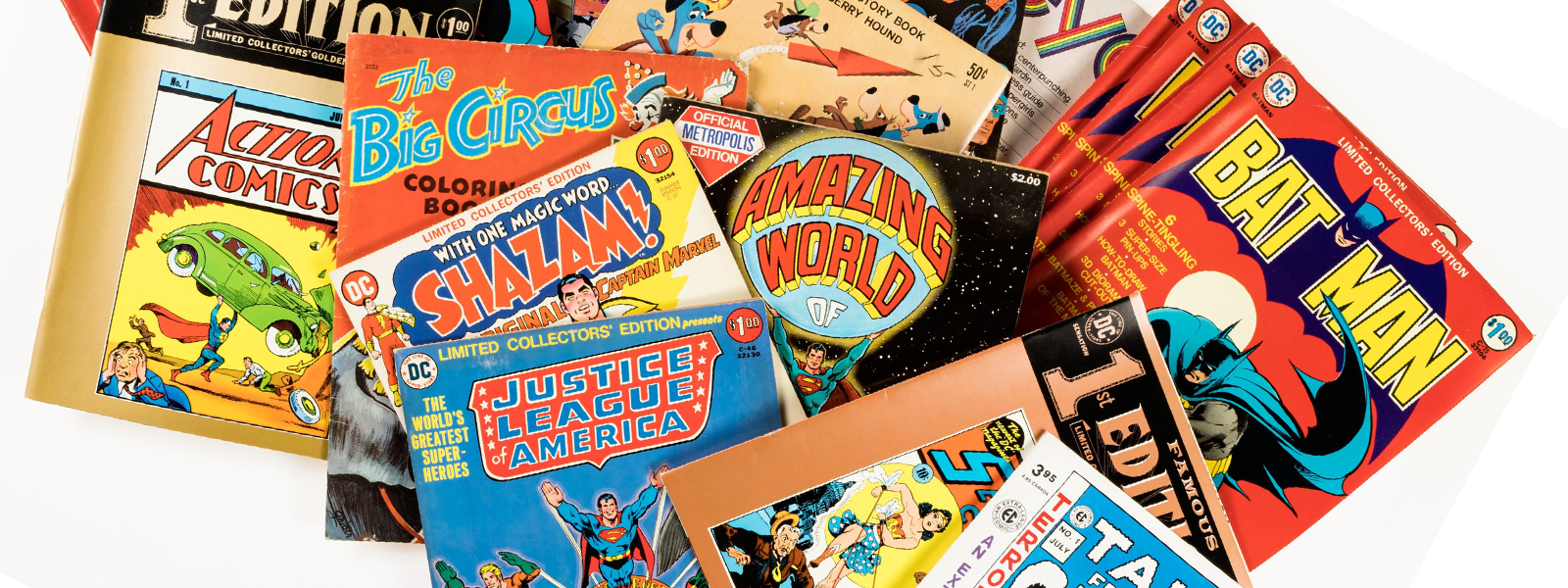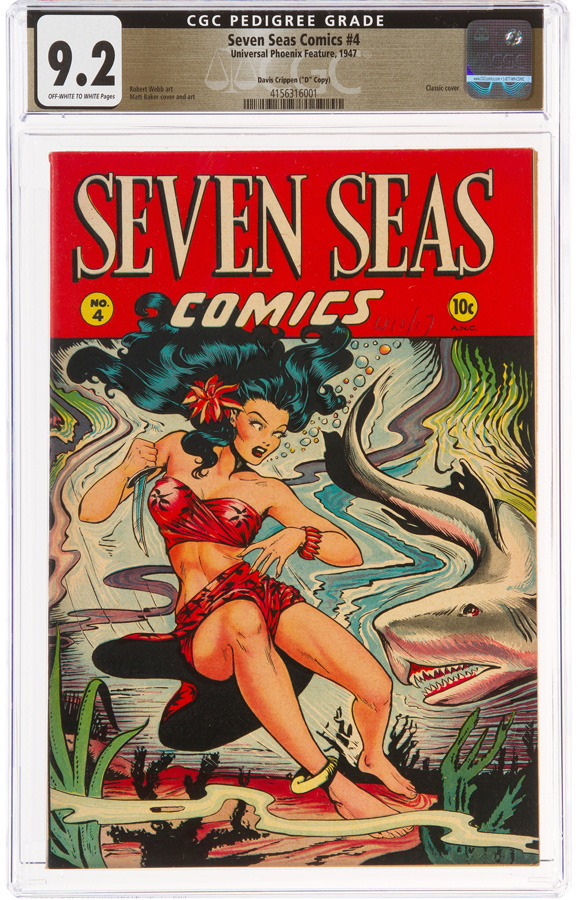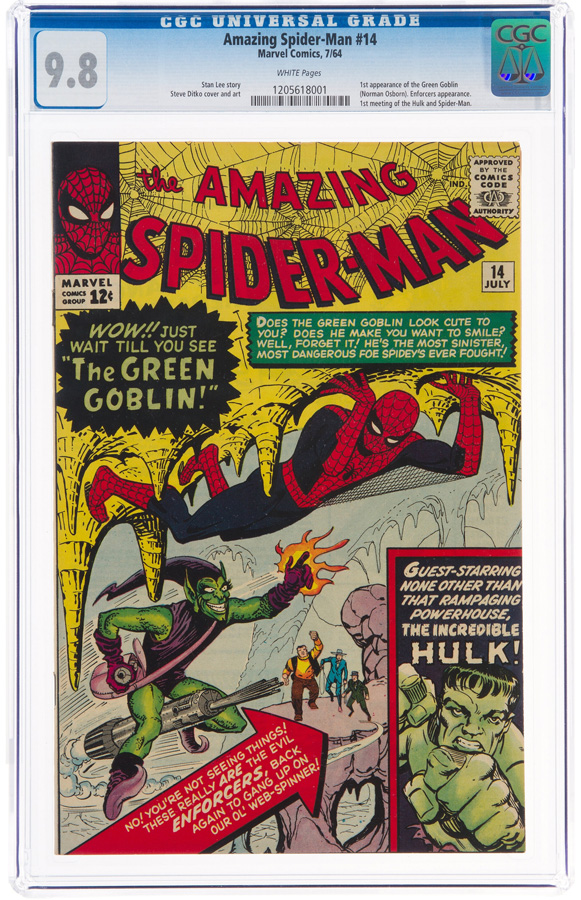WHETHER YOU’RE BUYING, SELLING OR JUST TRYING TO KEEP YOUR CURRENT COLLECTION SAFE, FOLLOW THESE TRIED-AND-TRUE TIPS AND TRICKS
By Jerry Stephan
Featuring the work of artist Matt Baker, this copy of 1947’s ‘Seven Seas Comics’ No. 4, graded NM- 9.2 by CGC, sold for $81,000 in a February 2023 Heritage auction.
While comic books published between 1938 and 1979 have the most collectible value, DO be aware that old doesn’t necessarily equal valuable. Within that time frame, superheroes have been the biggest driver in the market, led by Marvel, then DC and then everybody else. Other genres have been hot for two to five years at a time before leveling off. Pre-Code horror and Matt Baker romance books are enjoying such a surge right now. Sadly, Western comics have never had their day in the sun and aren’t worth much more than they were in the 1970s. Newspaper reprint comics, once on top in the 1960s, have similarly seen little increase in prices since the early ’70s. The best way to find out what comic books are worth is to look at what people are paying for them. Heritage’s online archives, for instance, show actual prices paid for comics of every genre.
When shopping for comics, DON’T forget to look at the back cover. There are a lot of great-looking comics that have back cover problems. It’s part of the book and will jeopardize the grade.
When removing the comic from the bag, DO make sure your thumb is up and over the edge of the book. We often see books where the middle of the top edge has some small wrinkles where someone jabbed his thumb on the edge before pulling the comic out.
Along those same lines, DO take out the board as well as the comic. You will also need to place the comic on the board before sliding it back in the bag. You need only press the board; the comic will follow. Doing board first, comic second, I can’t tell you how many times I’ve seen books with the back cover folded up at the bottom corner.
‘The Amazing Spider-Man’ No. 14 brought us two big firsts: the first appearance of the Green Goblin and the first meeting of the Hulk and Spider-Man. This copy of the 1964 title, graded NM/MT 9.8 by CGC, realized $210,000 in a September 2021 Heritage auction.
DON’T be tempted to restore your comic books. Restoration is a big no-no. The book restoration boom of the 1990s went bust when Certified Guaranty Company (CGC) opened its doors in 2000. Instead of the Universal blue label, restored books were given a purple label, which became known as “the purple label of death” – or PLOD. Restored books, which once sold for 80 to 90 percent of an unrestored copy, now sell for only 20 to 30 percent of unrestored value.
Autographs typically DON’T increase the value of the comic. When Stan Lee was alive, his signature on a $10 comic would help you get $50 or $60 for the book. But if you’re buying a high-grade Amazing Spider-Man No. 14 that sells in the tens of thousands, it’s the grade of the book that determines value, not the signature.
DON’T buy comics for an investment. Buy what you enjoy. Years later, you may have a small fortune, or you may have a pile of comics that can still bring you joy without regret.
 JERRY STEPHAN is Senior Comic Grader and Consignment Director at Heritage Auctions. He can be reached at JerryS@HA.com or 214.409.1595.
JERRY STEPHAN is Senior Comic Grader and Consignment Director at Heritage Auctions. He can be reached at JerryS@HA.com or 214.409.1595.



